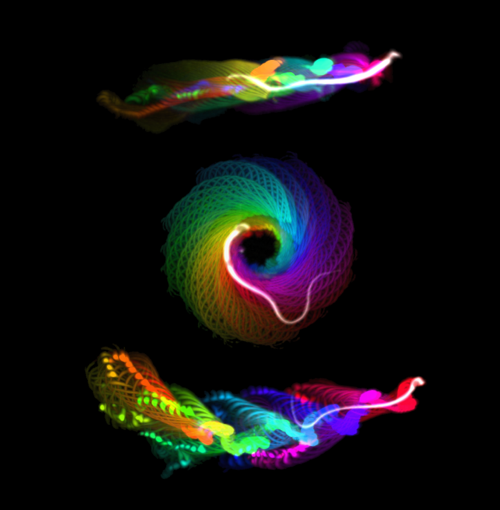Research News
After synthesis in the cell, proteins are often modified by enzymes that attach small molecules. Such “maturation” processes are known as post-translational modifications because they happen after protein synthesis. Often, their function is not known. An example, which illustrates our lack of in-depth knowledge, is their role on peculiar cellular structures, called microtubules.
Microtubules are very long filaments, built from a protein called tubulin. These filaments form cellular scaffolds that serve several functions. In particular, they can build slender appendages, called cilium or flagellum, that emanate from many cells and that are used as sensory antennas. Some antennas, such as the cilia in our airways or the sperm flagellum, can move. Microtubules also serve as a scaffold of the spindle apparatus used to separate the chromosomes during cell division or the long cytoskeleton of neurons. What enables microtubules to fulfil such diverse functions?
The sperm flagellum illustrates the sophistication of biological structures evolved by nature. The flagellar core is built from microtubules; on these filaments are sitting molecular motors - called dyneins - that can bend the microtubules to produce flagellar waves for propulsion and steering of sperm. The activity of thousands of motors is synchronized similar to the rowers’ beat in a galley. For the assembly and proper function of this complex bio-machine, the microtubules’ surface has to be primed.
An important modification of microtubules is glycylation, whereby side chains of glycine residues – an amino acid - are attached to tubulin. This modification was already identified during the 90s, yet its role has remained elusive. In a recent study by Gadadhar and collaborators published in the magazine Science, it was reported that when glycylation is absent, sperm cells cannot swim straight. This study suggests that glycylation is essential to prepare the surface of flagellar microtubules for their proper function. To show this, a mouse strain lacking the two glycylating enzymes was developed at the Institute Curie in Orsay. The flagellum of sperm from such KO mouse is still intact, but the dynein motors are not functioning properly anymore, leading to aberrant beating. As a consequence, mice lacking glycylation are sub-fertile because sperm navigation towards the egg is impaired.
This advance has been possible by the combined efforts of several research institutions including the Institut Curie in Orsay, the Max Planck Institute of Molecular Cell Biology and Genetics (MPI-CBG) in Dresden, the Center of advanced european studies and research (caesar) in Bonn, the University of Bonn, the Institut Cochin in Paris, and the Human Technopole Institute in Italy
Contact
Dr. Luis Alvarez
luis.alvarez@caesar.de
Center of Advanced European Studies and Research,
D-53175 Bonn, Germany.
Dr. Carsten Janke
Carsten.janke@curie.fr
Institut Curie, PSL Research University, CNRS UMR3348,
F-91405 Orsay, France
Dr. Gaia Pigino
pigino@mpi-cbg.de
D-01307 Dresden, Germany
Human Technopole,
I-20157 Milan, Italy
See also our press release.
